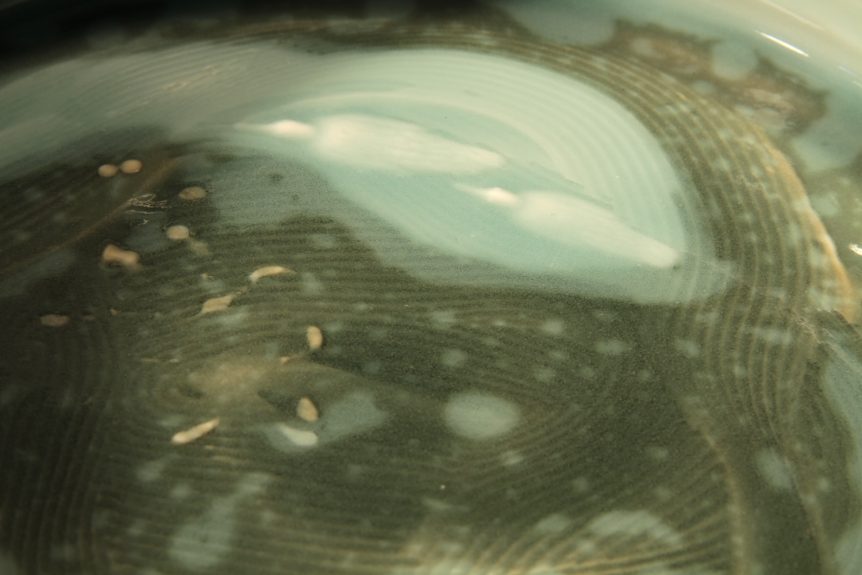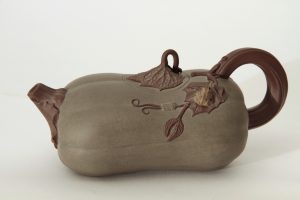In these videos, my technique of sprigging is shown here for the first time. Before watching, let me share what I have learned about sprigging.
Chinese potters have used a technique for hundreds of years, but my own European background made me look there for the secrets of sprigging technique. You have to be careful when looking at “factory” ceramics techniques, as their reasons for doing things are usually at variance with making good art. I have always been intrigued by factory made ceramics, mostly because I cannot believe what awful things they make out of such beautiful materials. Here is what I found.
Two Dutch men, the Elers brothers set up a factory in the late 1690’s in Staffordshire. They had both a ceramics, and a jewelry background, so used both disciplines in decorating their wares. They knew about mold making from jewelry, so their moulds were metal. They pushed soft clay into the little metal moulds that were probably oiled, and then attached that clay to a pot by pushing it into the wall of a vessel. The soft clay stuck to the vase, and the tool was pulled away, leaving a tell-tale mark around the added clay. This technique is called applied decoration, and it almost looks like a sprig. The Elers brothers were big influences for many years.
One of the first potters to do real sprig decoration was Thomas Whieldon. He was Josiah Wedgwood’s teacher/mentor and later on a partner in business. He had seen what the Elers brothers did, and he had seen the little tea pots that came with shipments of Chinese tea to England in the mid 1700’s. The Chinese were clever enough business people then to sell England on tea, and…by the way, this is what you brew it in. Order these. They were little Yixing tea pots that had a pine branch [a sprig] added to the surface of the tea pot. So the sprig of the pine branch became the name of the technique. It is a bit like what Kleenex did to tissue. Because Whieldon was a potter, he used earthenware to make his moulds. When he pushed damp clay into the porous mould, what came out was then moved physically to a form, and adhered with either thin slip or water and a light touch. It was a business man’s dream technique, because it was cheap, easy and very well-liked by the emerging middle class in England at that time. Not much has changed in English factories since. Wedgwood went his own way in 1759 and developed the technique that is still used today.
I wanted to try this technique in ways that would not replicate anything the factories were doing. I simply wanted to use the technique to help me tell stories about my own back yard. The bugs, fish, frogs, and flowers that are here are all part of my life. Speak and respond to what you see and know. I tried, and could not get anything out of a mould that didn’t look like a brick. I read, and found out that Wedgwood was still doing this kind of work, so with the help of our beautiful Canada Council for the Arts, I went to see the Wedgwood factory. I saw two women demonstrating how to make sprigs. I got exactly what I was looking for in a heartbeat, and more. I also met an unhappy Wedgwood employee, who was willing to tell me things I shouldn’t know…lovely! You have to love industrial espionage when you are a poor artist doing it. Here it is then…I hope you get something from it…I have.
In the first I guide you through the process. In the second video, you can see sprigging up close.
See a few pictures and additional videos in the technical area of this website over the next few weeks.
Cheers,
Harlan House RCA
Visit Harlan’s Facebook page.




